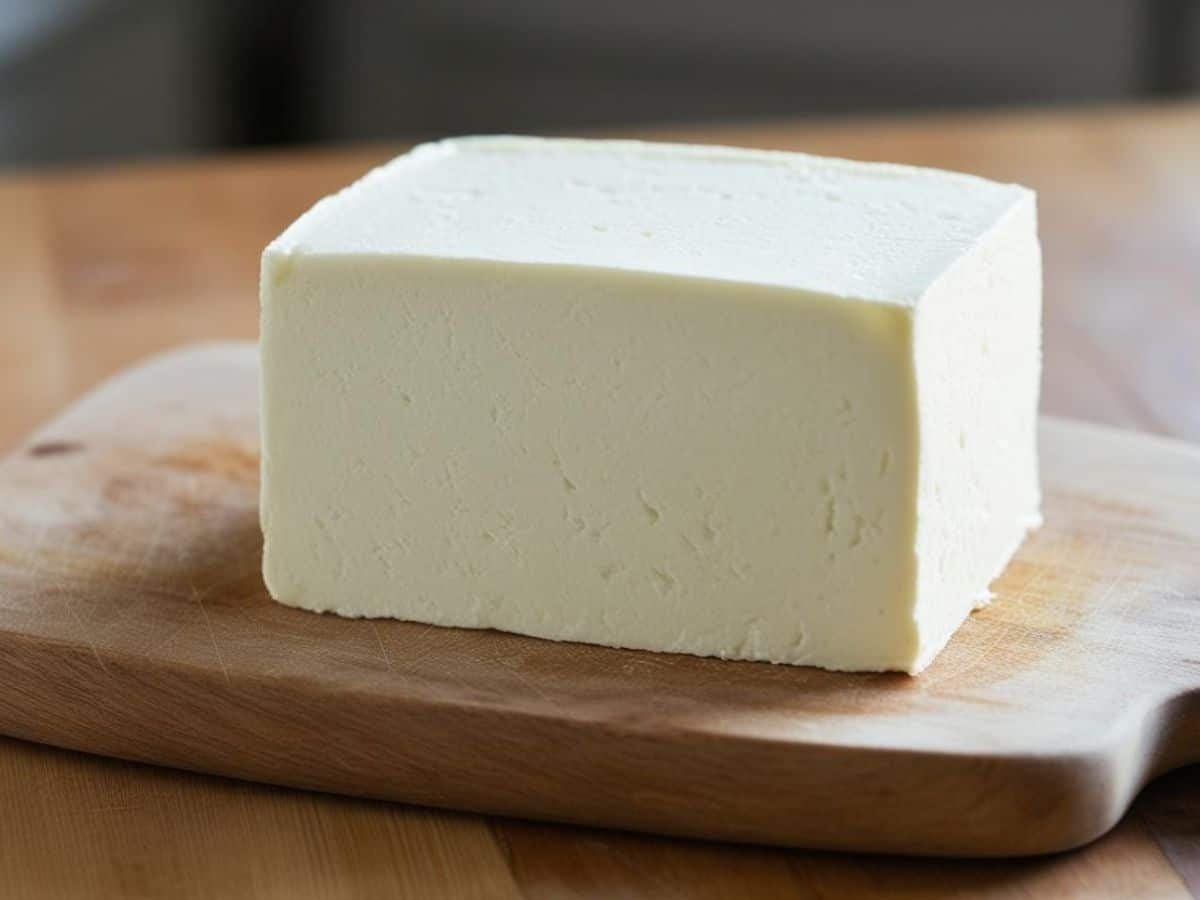Cheese is a staple in cuisines around the world, enjoyed for its diverse flavors, textures, and aromas. From sharp cheddar and creamy Brie to semi-soft paneer and crumbly feta, each variety has its own unique storage needs. Knowing how to store cheese properly is key to preserving its freshness, taste, and shelf life.
In this blog post, you’ll discover practical tips on how to store cheese at home - whether it's soft, semi-soft, or hard cheese.

Jump to:
- Tip 1. Understand the Type of Cheese
- Tip 2. Use Cheese Paper or Wax Paper
- Tip 3. Store in the Cheese Drawer or Vegetable Crisper
- Tip 4. Keep Cheese in Its Original Packaging (If Unopened)
- Tip 5. Wrap Different Cheeses Separately
- Tip 6. Label and Date Your Cheese
- Tip 7. Don’t Freeze Soft Cheeses
- Tip 8. Let Cheese Come to Room Temperature Before Serving
- Bonus: How Long Does Cheese Last in the Fridge?
- Conclusion
- Frequently Asked Questions
- Recipes Using Cheese
- How to Store Cheese: Tips to Keep It Fresh Longer
Tip 1. Understand the Type of Cheese
Different cheeses require different storage methods. For example soft, semi-soft, or hard cheese - have varying moisture levels, textures, and shelf lives, which affect how they should be stored. By identifying the type of cheese, you can choose the most suitable method (like wrapping, temperature control, or using airtight containers) to keep it fresh longer and prevent spoilage.
1. Soft Cheese (e.g., Brie, Camembert, Cream Cheese)
- Storage Tip: Wrap in wax or parchment paper, then loosely place in a container or resealable bag.
- Why: These cheeses have high moisture content and need to breathe slightly to avoid becoming slimy or moldy too quickly.
2. Semi-Soft Cheese (e.g., Mozzarella, Paneer, Havarti)
- Storage Tip: Wrap in parchment paper or store submerged in lightly salted water (for mozzarella/Paneer), then keep in an airtight container.
- Why: Semi-soft cheeses benefit from moisture retention while still being protected from air and other food odors.
3. Hard Cheese (e.g., Cheddar, Gouda, Parmesan)
- Storage Tip: Wrap tightly in cheese paper or wax paper, then place in a resealable plastic bag or airtight container.
- Why: These cheeses have low moisture and are less prone to spoilage, but proper wrapping prevents them from drying out or cracking.
4. Blue Cheese (e.g., Roquefort, Gorgonzola)
Why: Blue cheese needs some airflow for mold to remain stable but should be isolated to avoid odor transfer.
Storage Tip: Wrap in foil or cheese paper to let it breathe, then place in a sealed container to contain its strong aroma.
Understanding the type of cheese you have will help you apply the right storage techniques.

Tip 2. Use Cheese Paper or Wax Paper
Avoid storing cheese in plastic wrap for long periods. Instead, use cheese paper, parchment paper, or wax paper, which allows the cheese to breathe while preventing it from drying out. You can loosely wrap it and then place it in a plastic bag or container for extra protection.
Tip 3. Store in the Cheese Drawer or Vegetable Crisper
The ideal spot in your refrigerator for cheese is the cheese drawer or the vegetable crisper, where the temperature is more stable and humidity levels are higher. This helps prevent cheese from becoming too dry or too moist.
Tip 4. Keep Cheese in Its Original Packaging (If Unopened)
If your cheese is still in its original vacuum-sealed packaging, it’s best to keep it that way until you’re ready to use it. The packaging is designed to extend shelf life and prevent contamination.
Tip 5. Wrap Different Cheeses Separately
Each cheese has its own aroma and flavor. To avoid cross-contamination and odor transfer, always wrap different cheese types separately. This is especially important for blue cheese or aged varieties with strong scents.
Tip 6. Label and Date Your Cheese
It’s easy to forget how long a piece of cheese has been in your fridge. Add a label with the name and date of storage so you can keep track and avoid spoilage.
Tip 7. Don’t Freeze Soft Cheeses
While hard cheeses can be frozen, soft and fresh cheeses (like cream cheese, mozzarella, paneer, or ricotta) don’t freeze well and often become crumbly or watery after thawing. Freeze only firm cheeses like cheddar, gouda, or parmesan — and use them in cooked dishes after thawing.

Tip 8. Let Cheese Come to Room Temperature Before Serving
This isn’t a storage tip, but it's worth mentioning. When you're ready to eat cheese, remove it from the fridge 30–60 minutes before serving. This brings out its full flavor and aroma.
Bonus: How Long Does Cheese Last in the Fridge?
Here’s a general guideline:
- Soft cheese: 1–2 weeks
- Semi-soft cheese: 2–3 weeks
- Hard cheese: 4–6 weeks or longer
- Fresh cheese (like paneer, ricotta): 5–7 days
Always check for signs of spoilage like off smells, visible mold (on soft cheeses), or a slimy texture.
Conclusion
Storing cheese the right way ensures it stays flavorful, safe, and delicious for as long as possible. Whether you're a cheese lover or a casual snacker, following these cheese storage tips will help you reduce waste and enjoy your favorite varieties to the fullest.
Frequently Asked Questions
The best way to keep cheese after opening is to wrap it in wax paper or parchment paper (not plastic wrap), then place it in an airtight container or a resealable plastic bag. Store it in the refrigerator’s cheese drawer or vegetable crisper, where temperature and humidity are more stable.
Yes, storing cheese in an airtight container helps protect it from drying out and absorbing odors from other foods. However, it’s best to first wrap the cheese in wax or parchment paper to allow it to breathe while still being protected.
To prevent cheese from molding, wrap it in wax or parchment paper to allow airflow, then place it in an airtight container in the fridge’s cheese drawer or vegetable crisper. Regularly check and rewrap the cheese with fresh paper every few days to maintain freshness and reduce moisture buildup.
Cheese can be stored in either glass or plastic containers, but glass is often preferred because it doesn't retain odors and is non-reactive. Whichever you choose, wrap the cheese in wax or parchment paper first to maintain proper moisture and airflow before sealing it in the container.

Recipes Using Cheese
- Paneer Butter Masala
- Savory Zucchini Cheese Bread
- Almond Flour Keto Crackers
- Pumpkin Cheesecake
- Broccoli Cheese Soup

How to Store Cheese: Tips to Keep It Fresh Longer
Ingredients
- Know your cheese type
- Use cheese or wax paper
- Store in the cheese drawer or crisper
- Keep in original packaging if unopened
- Wrap cheeses individually
- Label and date each piece
- Avoid freezing soft cheeses
- Bring to room temperature before serving
Instructions
- how to store cheese
- cheese storage tips
- storing cheese in fridge
- keep cheese fresh
- how long does cheese last
- best way to store cheese
- refrigerate cheese
Disclaimer
Nutrition values are my best estimates. If you rely on them for your diet, use your preferred nutrition calculator.





Leave a Reply
You must be logged in to post a comment.